Week 5- June 30, 2011: Nats Momentos
In honor of the beginning of outdoor Nats this week, we are featuring a few patches and pins from former competitions. We hope you enjoy looking at these small mementos from the past.
1. 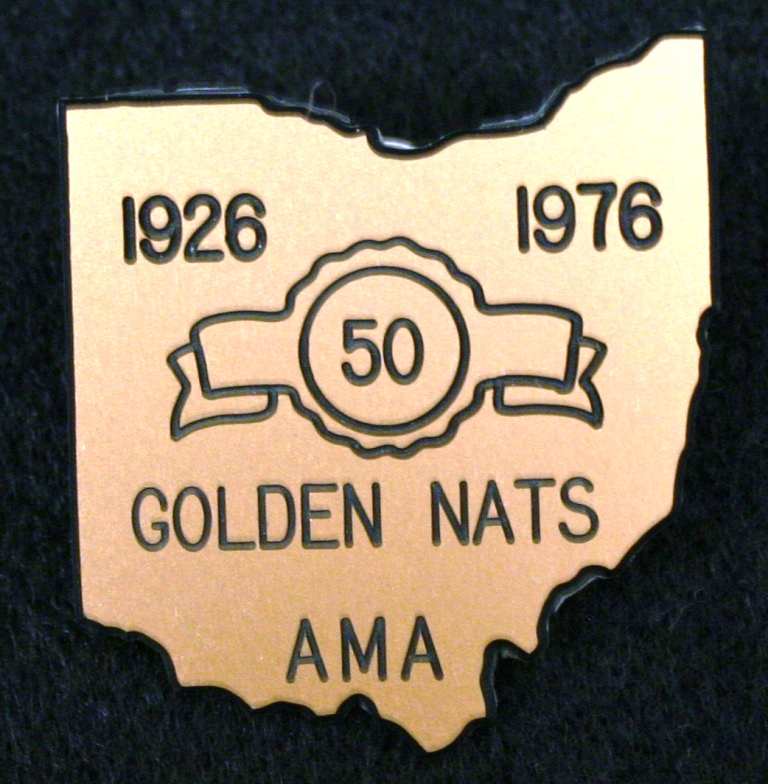 2.
2. 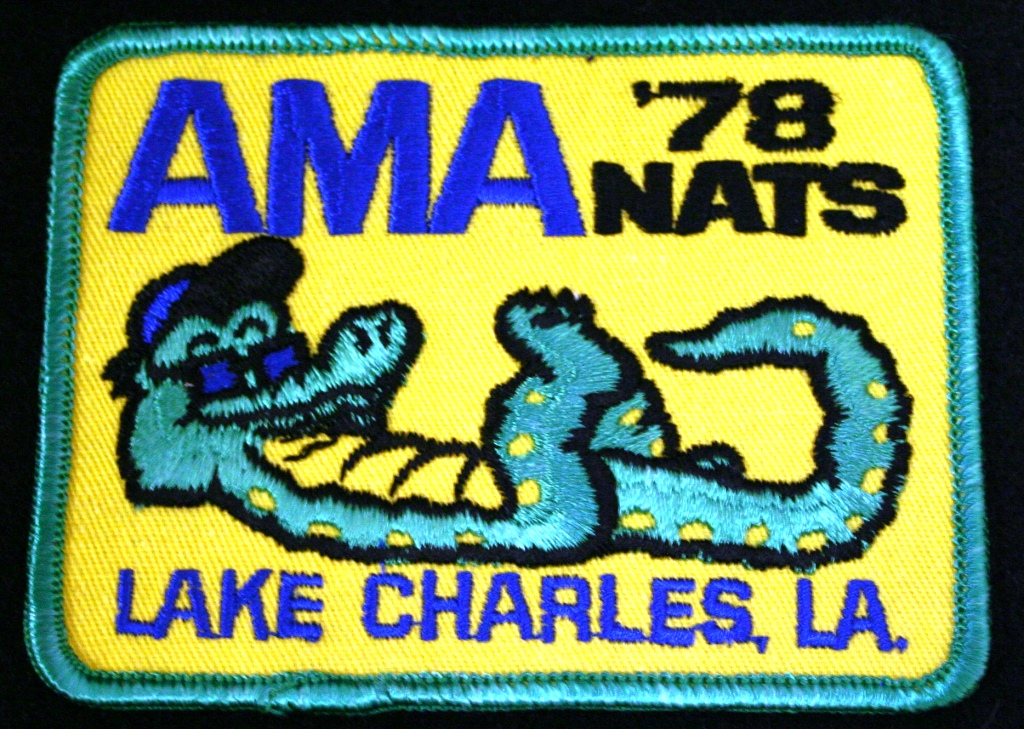
1. Pin, 1976 Nats, Dayton, Ohio (50th anniversary of the Nats) (Source: National Model Aviation Museum Collection, #2010.08.12)
2. Patch, 1978 Nats, Lake Charles, Louisiana (Source: National Model Aviation Museum Collection, #2007.13.103)
3. 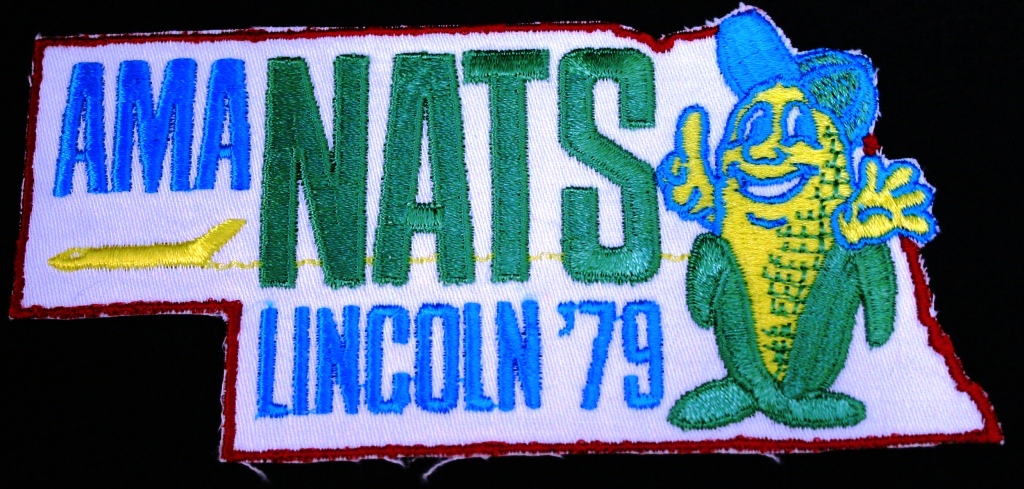
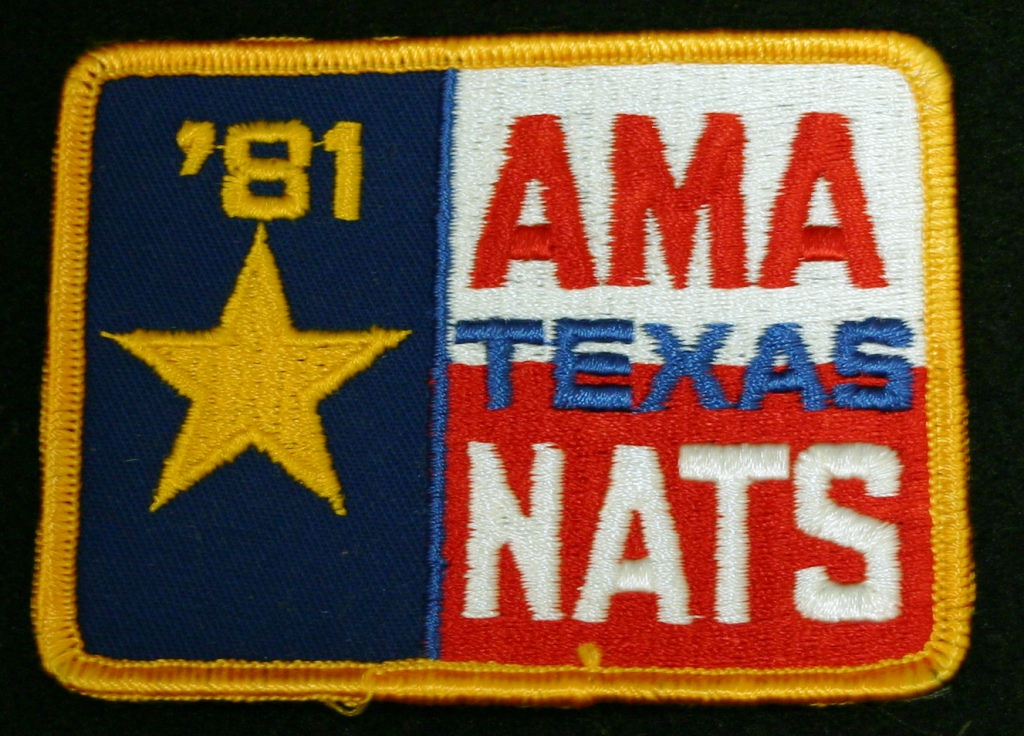
3. Patch, 1979 Nats, Lincoln, Nebraska (Source: National Model Aviation Museum Collection, #2008.05.152)
4. Patch, 1981 Nats, Seguin, Texas (Source: National Model Aviation Museum Collection, #2005.02.152)
5. 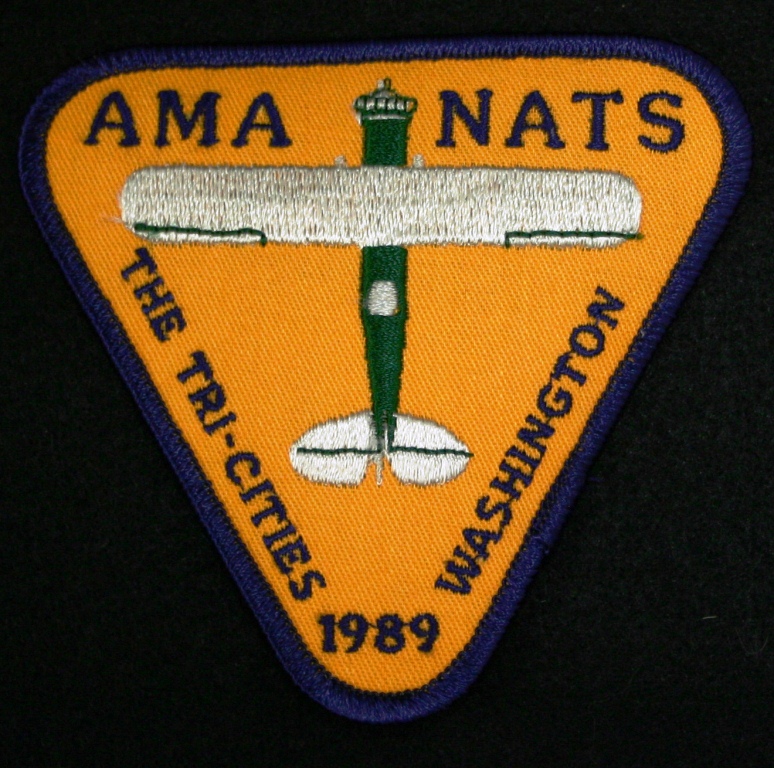 6.
6. 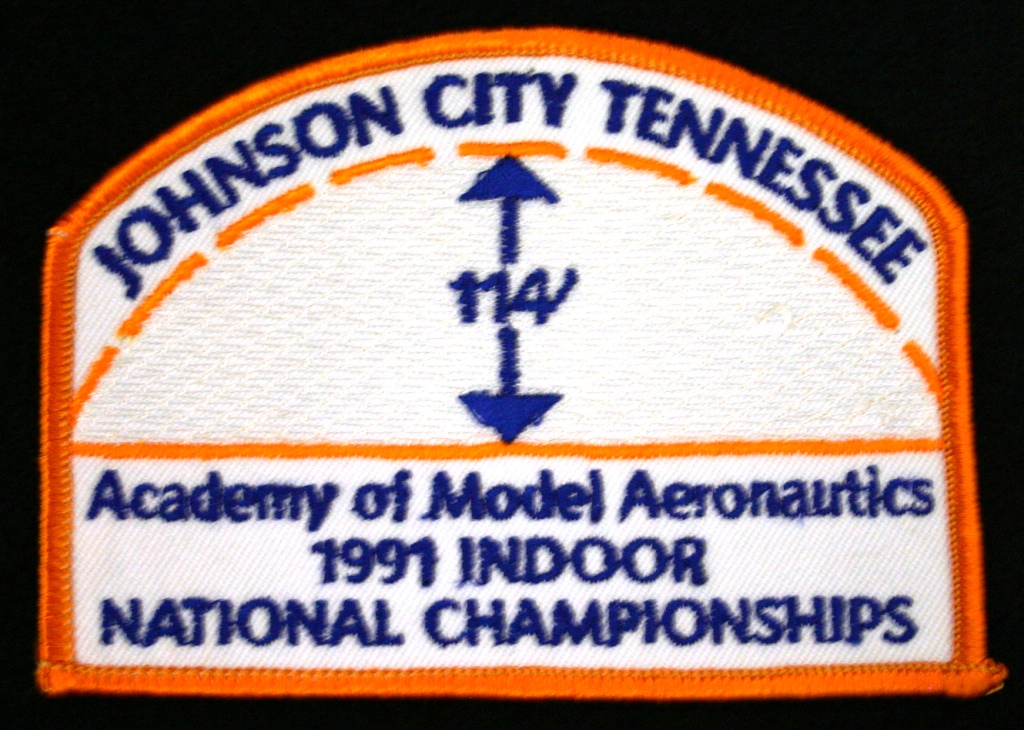
5. Patch, 1989 Outdoor Nats, Tri-Cities, Washington – Pasco, Kennewick and Richland (Source: National Model Aviation Museum Collection, #2006.02.131)
6. Patch, 1991 Indoor Nats, Johnson City, Tennessee (Source: National Model Aviation Museum Collection, #2007.13.114)
Week 4- June 23, 2011: Opening AMA’s Membership Drive (June 23, 1937)
With the June 23, 1937 issue of Model Aviation (Volume 1, Number 20), the Academy of Model Aeronautics kicked off a “nation-wide drive to enroll all expert model plane builders and flyers in its membership rolls.” Dues remained the same as had been announced in the next Model Aviation (Volume 1, Number 21); with Junior membership for those under 21 at $1.50 and a senior membership at $3.00. The Academy, made up of expert aeromodelers from around the country, was to act as the advisory board on model aircraft to the National Aeronautic Association (NAA.)
1. 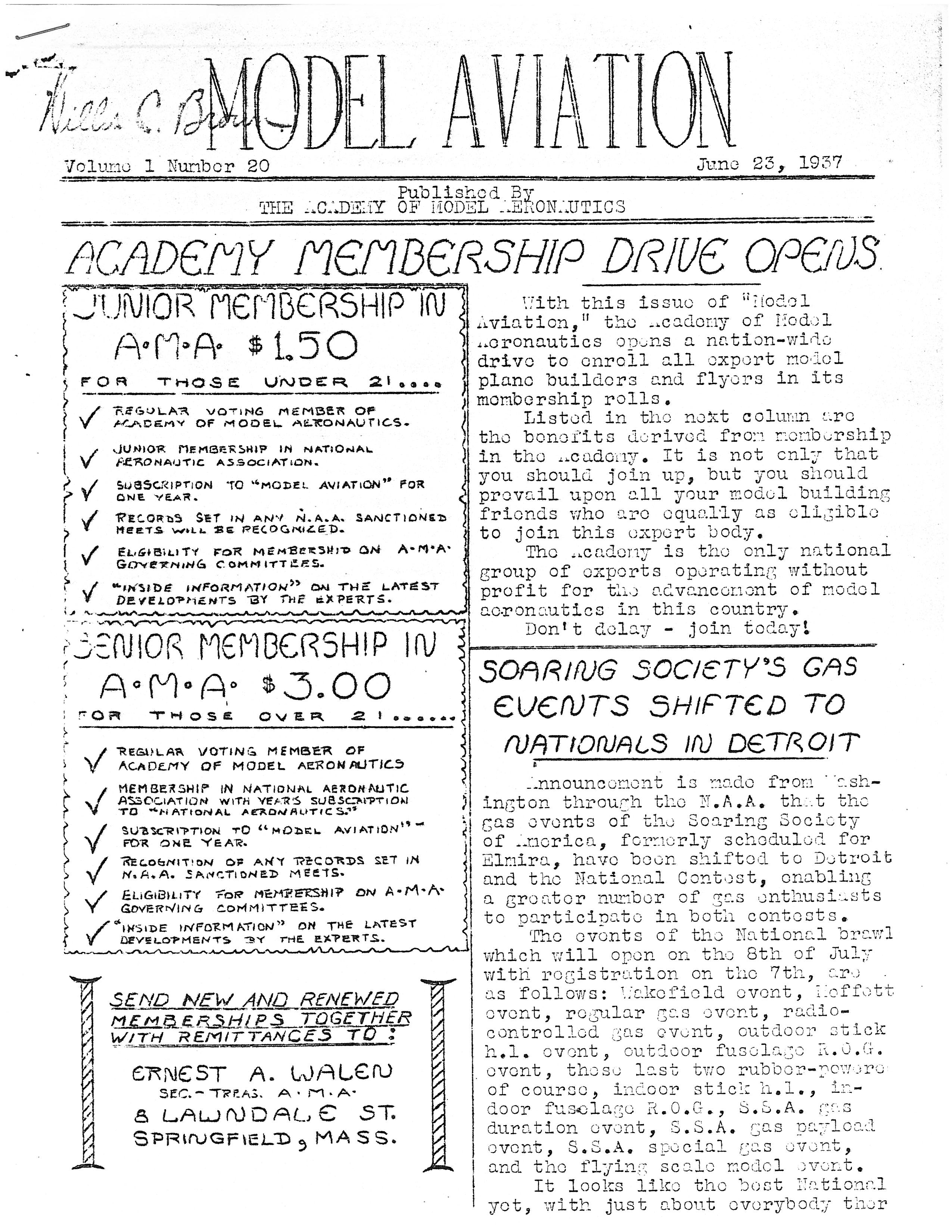 2.
2. 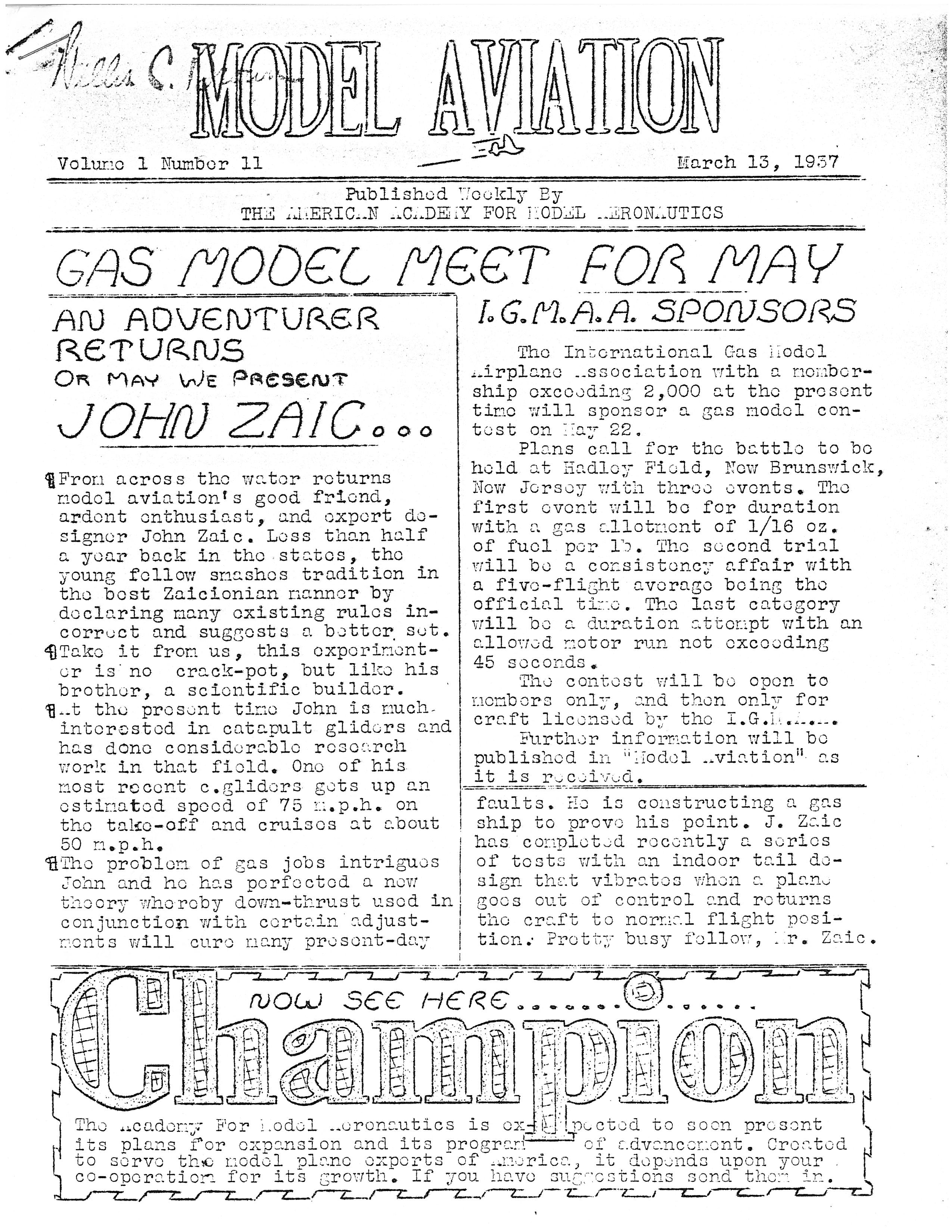
1. Model Aviation (Volume 1, Number 11), cover announcement that “The Academy for Model Aeronautics is expected to soon present its plans for expansion and its program of advancement.” (Source: NMAM Library collection)
2. Model Aviation (Volume 1 number 20), “Academy Membership Drive Opens.” (Source: NMAM Library collection)
Week 3 – June 16, 2011: An Idea for a Model Aircraft Country Club
From A Preliminary Proposal for the First Model Aircraft Country Club in the United States, June 15, 1976, by Frank Anderson:
“This map shows the area under consideration for the first U.S. Model Aircraft Country Club [shaded area] which will provide both Sport and Competition R.C. Modellers either a few precious hours, days or even weeks of relaxation, away from the hassles of the workaday world, in friendly companionship with many others who also enjoy the same avocation.
“M.A.C.C [Model Aeronautics Association of Canada] would provide the Aeromodelling movement with a whole new approach to the Sport/Hobby and most assuredly define our avocation to the Sport/Hobby and most assuredly define our avocation as a proper adult recreation, finally on a par with golf.
“Benefits to both our national associations and our model industry are obvious and the founders of our Country Club would be well repaid in both historical significance as well as financial return.”
1. 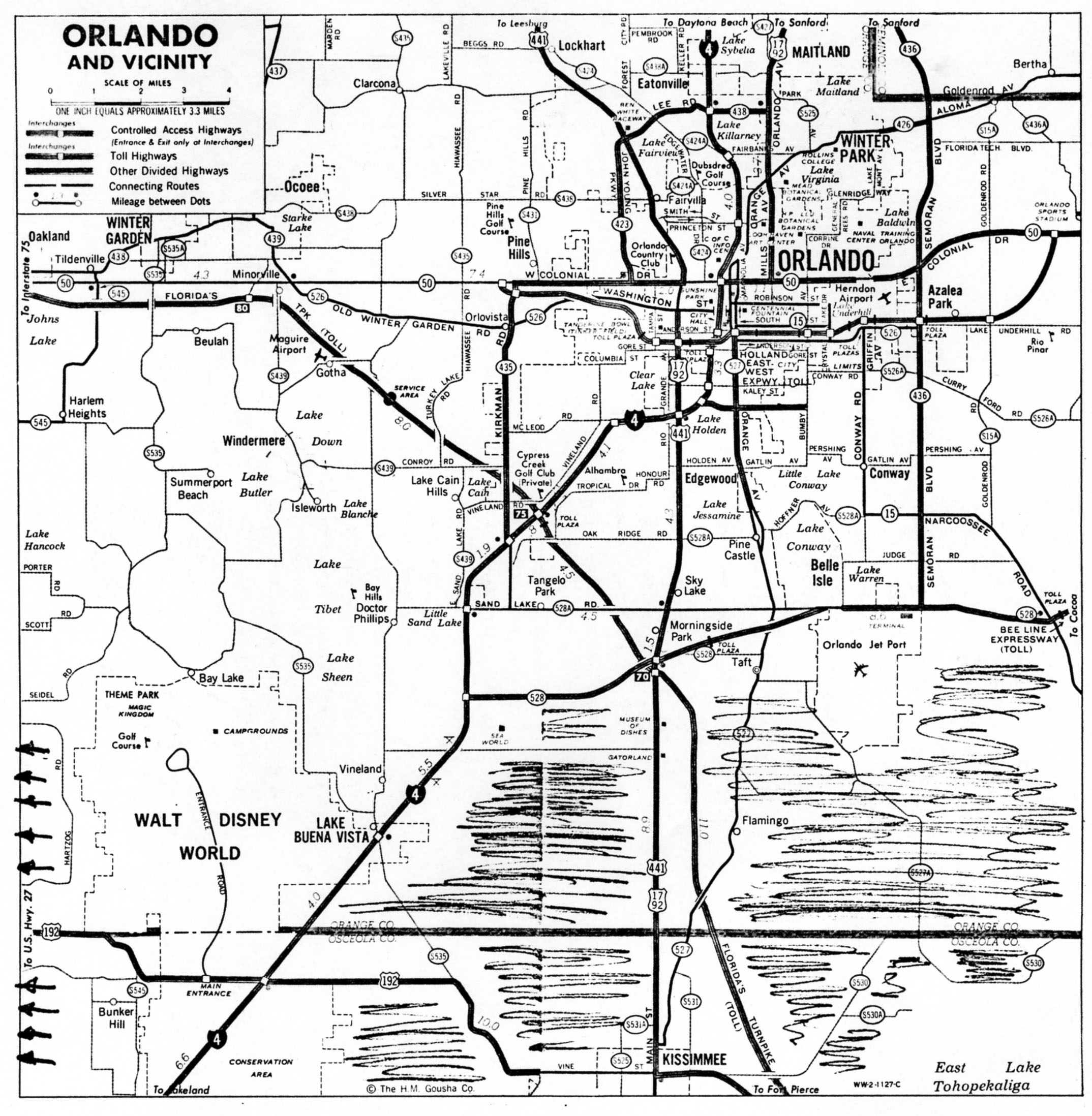
1. Scan of Map Source: National Model Aviation Museum Archives, AMA Collection #0001
Week 2 – June 9, 2011 – Control Line Aeromodeling
Control Line model aircraft are designed to be flown on a wire or wires in a circular path around the aeromodeler. The wires, connected to a handle, allow the pilot to control the model along the pitch axis.
Development of Control Line model aircraft began with tethered models that were flown around a fixed anchor point. In 1879, Victor Tatin demonstrated a compressed-air-powered aircraft on a specially constructed circular pad in Chalais-Meudon, France. Sixty years later, Oba St. Clair of Yamhill, Oregon took this one step further.
In 1936, St. Clair began constructing a Berliner Joyce Free Flight model from plans featured in the August 1935 issue of Modern Mechanics and Invention magazine. As he was nearing completion, he realized that his model would quickly be damaged or lost in the forests that surrounded his home. He decided the solution was to fly the airplane around in a circle attached to a single line. If there was even the slightest breeze, the model would begin to climb and descend on its own though, so St. Clair decided he needed more control.
During the fall of 1936, St. Clair devised a four-line control system that he called “full-house” and installed it in a new airplane that he built called the Miss Shirley (named after his just-born daughter). With no wire on-hand, St. Claire used fishing line, but this he found did not stretch equally. To allow for equal stretching, he used a large handle with four poles attached, letting him to quickly take up any slack in the lines. The “full-house” allowed him to control the elevator, ailerons, and throttle. On July 4, 1937, he made his first successful flight. Word spread quickly and numerous articles were written, highlighting this new form of model airplane control.
It was not long before other modelers began developing and marketing Control Line systems. In 1939, the Stanzel brothers began advertising their TigerShark, and in 1940, Jim Walker unveiled his Fireball. In no time, Control Line models became all the rage, replacing Free Flight models on the shelves of local hobby shops.
For additional information on Oba St. Clair, the AMA History Program has a biography of him online: https://www.modelaircraft.org/files/StClairOba.pdf. In addition, Charles Mackey has created a website about Oba: https://obastclair.com/index.html.
Plans for the Berliner Joyce were reprinted in the February 1977 issue of Model Builder magazine, and plans are available from the Bill Northrop Plans Service.
1. 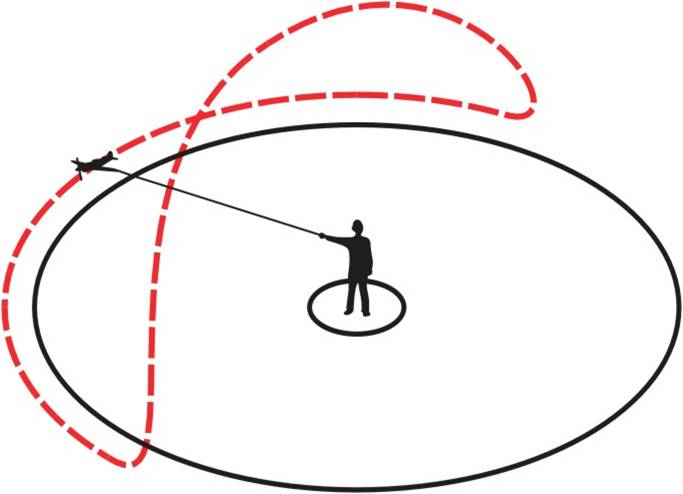
1. This diagram shows how a Control Line model airplane is flown in the hemisphere around the pilot. The pilot controls the pitch axis of the airplane. (Source: National Model Aviation Museum)
2. 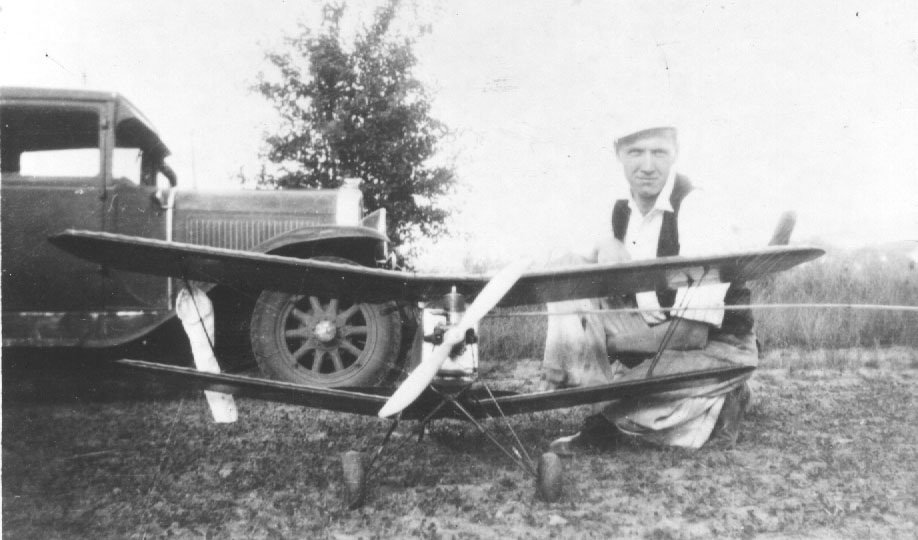 3.
3. 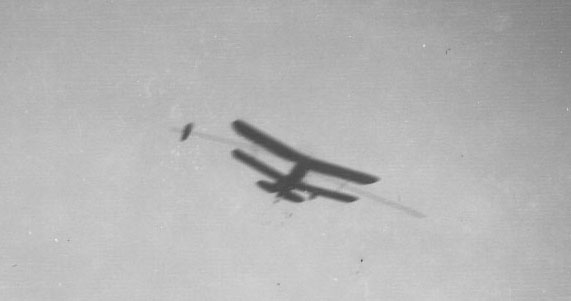
2. St. Clair kneeling beside his Berliner Joyce, 1936. (Source: AMA History Program, courtesy of Shirley St. Clair)
3. The Berliner Joyce in flight. The windsock, attached to right wing, kept the airplane turning away from the circle keeping the Control Line tight. Source: AMA History Program, courtesy of Shirley St. Clair)
4.  5.
5. 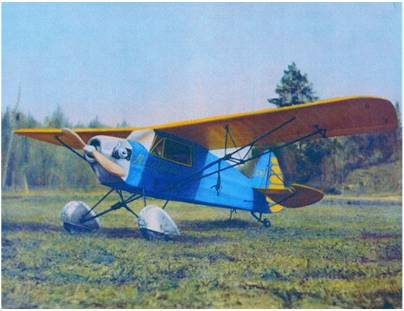
4. St. Clair holding his “full-house” control system. (Source: AMA History Program, courtesy of Shirley St. Clair)
5. The Miss Shirley, 1937. (Source: AMA History Program, courtesy of Shirley St. Clair)
Week 1 – June 2, 2011 – AMA’s Reston, Virginia Headquarters
The AMA Headquarters was in at least eight different locations before it was determined a permanent location was needed. Washington DC prices were increasing and the number of staff needed for the increase in membership deemed a new building to be built. A capital campaign started to help pay for the building – people who gave money received a patch, pin, or a key noting they were AMA Supporters. On June 27, 1982, the ground was broken in Reston, Virginia. In September of 1983, the building opened. The decal on the glass above the doorway stated it was the “National Center for Aeromodeling.”
In 1992, the Executive Council decided to move the Headquarters to Muncie, Indiana, on 1000 acres of land, calling the land the “International Aeromodeling Center” (IAC) and the building the “Frank V. Ehling Complex.” In 2001, another building on the IAC site was built to help house the growing staff and give the Museum more room for storage.
1. 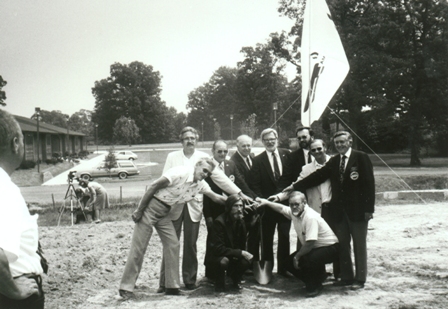 2.
2. 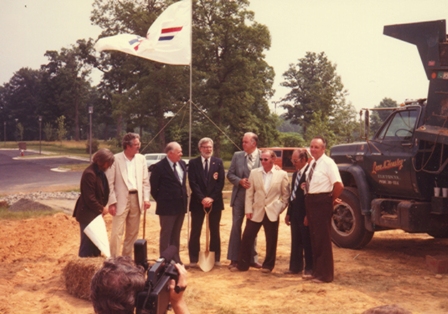
1. & 2. Groundbreaking ceremonies for the AMA Headquarters building in Reston, Virginia, June 27, 1982. (Source: National Model Aviation Museum Archives, AMA Collection #0001.)
3. 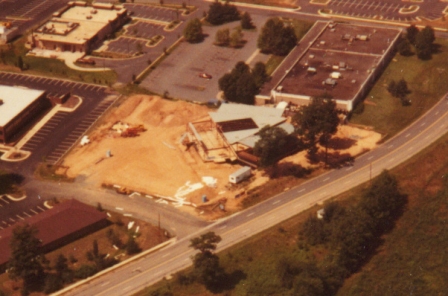 4.
4. 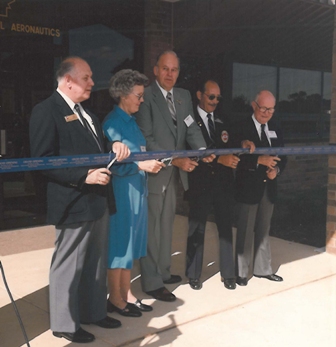
3. A view from the air of the Reston headquarters building construction. (Source: National Model Aviation Museum Archives, AMA Collection #0001.)
4. The ribbon-cutting ceremony for the Reston headquarters building, September 1983. (Source: National Model Aviation Museum Archives, AMA Collection #0001.)
5. 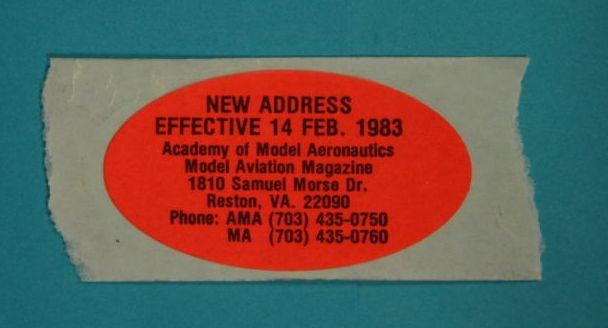 6.
6. 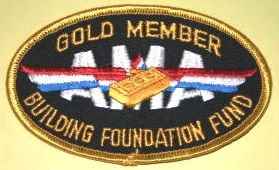
5. The AMA announced its new address to members well in advance with stickers like these. (Source: National Model Aviation Museum Collection, AMA Collection, 2007.13.57.)
6. To encourage monetary donations towards building costs, several levels of donation to the fund were set up and donors received various items at each level. This patch indicated that the donor had given at the gold level, or the highest level toward the building fund. (Source: National Model Aviation Museum Collection, AMA Collection, 2005.02.101.)
7. 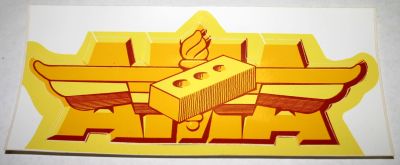 8.
8. 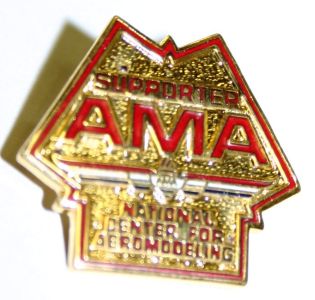
7. This sticker indicated that the owner had given a basic donation to the building fund. (Source: National Model Aviation Museum Collection, AMA Collection, 2006.01.171.)
8. Supporters of the building fund could also could receive lapel pins. This particular pin belonged to Frank Zaic. (Source: National Model Aviation Museum Collection, donated by Frank Zaic, 1999.46.10.)